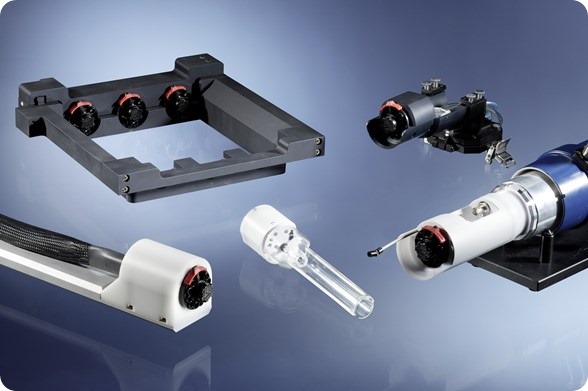Today, at the 2013 World Molecular Imaging Congress (WMIC), Bruker introduces a new multimodal animal bed enabling multiple sequential imaging sessions in preclinical research with robust repositioning between scans, while avoiding unwanted motion of the animal during the investigation. This optimizes results for image fusion, combined processing and evaluation of preclinical research applications requiring multiple imaging modalities across multiple systems. The multimodal animal bed is compatible with most Bruker preclinical imaging systems, including the BioSpec® and ICON™ systems for MRI, Albira™ for PET/SPECT/CT, SKYSCAN 1176 for micro-CT, and Xtreme for Optical Molecular Imaging.

“We are absolutely thrilled about this animal bed platform,” said W. Matthew Leevy, Ph.D., Director of Biological Imaging at the University of Notre Dame, Indiana. “It will enable rapid image fusion between any of the eight imaging modalities within our core facility at Notre Dame, and result in higher orders of non-invasive, multimodal imaging experiments.”
High precision animal positioning is achieved due to an intrinsic registration system that provides a joint reference point on each connector within Bruker’s preclinical imaging systems. Based on this information, data combination through image superposition can be performed automatically and accurately. The quick-lock connector offers identical interfaces for animal supervision and care, including anesthesia, warming, respiratory control, 3-point ECG for heart rate, and body temperature sensor. The life signals may be used for gating and triggering experiments. In addition, the closed design of the cassettes guarantees safe removal of the anesthetic gases and maximum reproducibility during co-registration of the data.
“We are very pleased with this important new development uniquely available from Bruker,” stated Dr. Tim Wokrina, Global Product Manager for MRI at Bruker BioSpin. “A robust multimodality imaging workflow today is key for the success of many modern preclinical imaging laboratories. In addition to higher productivity, one also significantly improves on image quality.”
The multimodal animal bed system will initially be delivered with a 30 mm cassette for mouse imaging. A larger cassette for rat imaging applications will follow in 2014. Bruker imaging systems offer standardized DICOM export to enable easy and automated co-registration of images, joint processing and evaluation with maximum precision.
For more information: www.bruker.com
For more information on the multimodal preclinical imaging animal bed: https://www.bruker.com/en.html
For more information on Bruker at WMIC: https://www.bruker.com/en.html